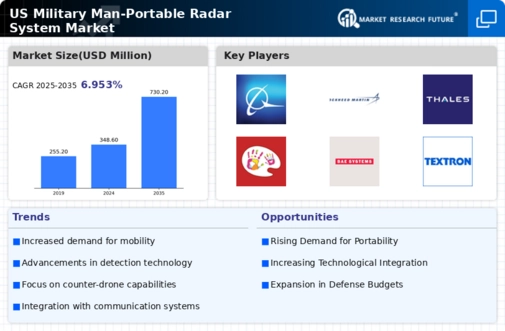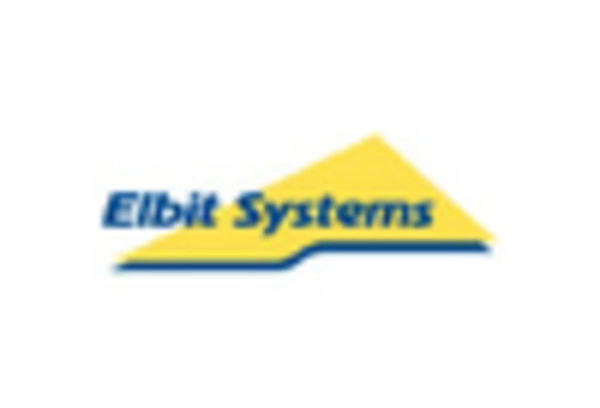Increased Defense Budgets
the military man-portable radar system market is experiencing growth due to increased defense budgets in the US. The government has allocated substantial funds to enhance military capabilities, with a focus on advanced technologies. In recent years, defense spending has risen, reaching approximately $750 billion in 2025. This financial commitment is likely to drive demand for sophisticated radar systems that can be deployed in various operational scenarios. As military forces seek to improve situational awareness and operational effectiveness, investments in man-portable radar systems are expected to rise. This trend indicates a robust market environment, as defense contractors and manufacturers align their offerings with the evolving needs of the armed forces.
Focus on Soldier-Centric Solutions
the military man-portable radar system market is evolving with a focus on soldier-centric solutions that enhance individual capabilities. As the US military prioritizes the well-being and effectiveness of its personnel, there is a growing demand for portable radar systems that are lightweight, user-friendly, and adaptable to various environments. This shift towards soldier-centric design is likely to drive innovation in the market, as manufacturers seek to develop systems that can be easily operated by individual soldiers in the field. The emphasis on enhancing soldier survivability and situational awareness is expected to result in increased investments in man-portable radar technologies, thereby expanding the market.
Rising Threats and Security Concerns
the military man-portable radar system market is influenced by rising threats and security concerns, particularly in the context of asymmetric warfare and terrorism. The US military faces challenges from non-state actors and advanced adversaries, necessitating the deployment of portable radar systems for enhanced surveillance and reconnaissance. The need for real-time intelligence and threat detection has become paramount, leading to increased procurement of man-portable radar systems. This heightened focus on security is reflected in the growing demand for systems capable of detecting drones, missiles, and other aerial threats. As military operations evolve, the market is likely to expand to meet these pressing security needs.
Emerging Applications in Civilian Sectors
the military man-portable radar system market is witnessing emerging applications in civilian sectors, which could provide new growth opportunities. As radar technology advances, its potential uses extend beyond military applications to areas such as disaster response, search and rescue operations, and border security. The adaptability of man-portable radar systems for civilian use is becoming increasingly recognized, leading to potential collaborations between military and civilian entities. This diversification of applications may stimulate demand and innovation within the market, as manufacturers explore ways to tailor their products for both military and civilian needs. The intersection of military and civilian applications could reshape the market landscape in the coming years.
Technological Integration and Interoperability
the military man-portable radar system market is shaped by the need for technological integration and interoperability among various defense systems. As military operations become more joint and coalition-based, the ability to share data and communicate effectively across platforms is crucial. Man-portable radar systems that can seamlessly integrate with existing military infrastructure are in high demand. This trend is underscored by the increasing emphasis on network-centric warfare, where real-time data sharing enhances operational effectiveness. The market is likely to see innovations that facilitate interoperability, ensuring that man-portable radar systems can work in conjunction with other military assets, thereby enhancing overall mission success.

















Leave a Comment